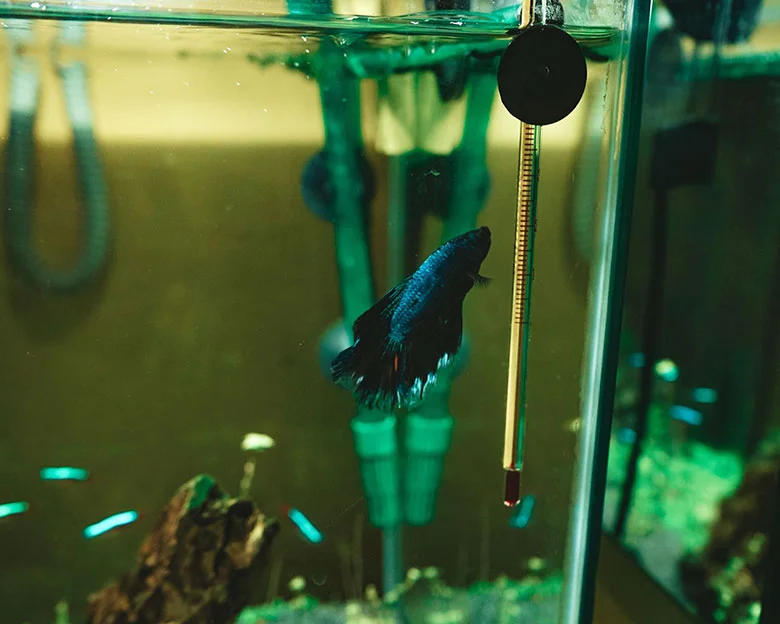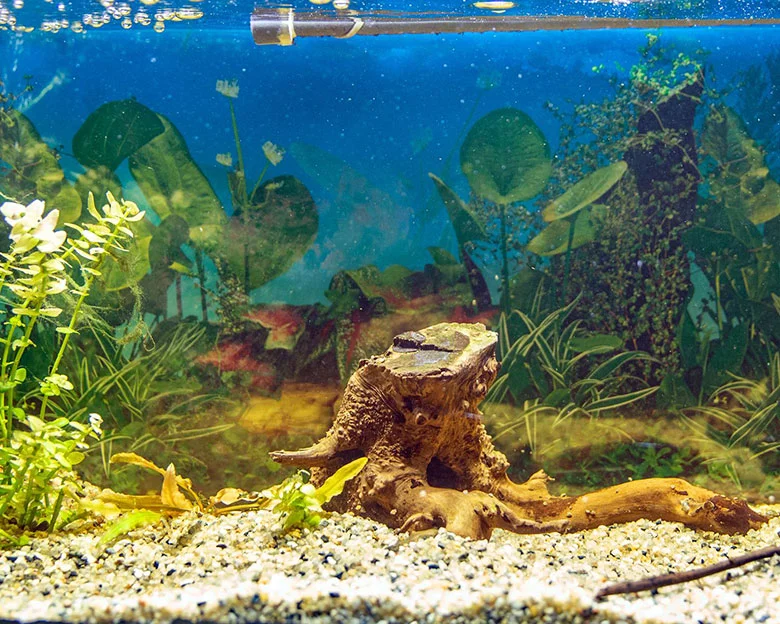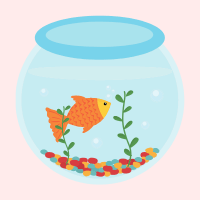Are you struggling to maintain the pH levels in your aquarium and wondering how to safely lower pH in your aquarium? Maintaining a consistent pH level is crucial for the health and well-being of your aquatic pets. However, sometimes the pH levels can be too high, which can be harmful to the fish and other aquatic life.
In this article, we will discuss safe and natural methods for lowering pH levels in your aquarium. First, let’s look at the importance of pH levels in your aquarium. pH is a measure of the acidity or alkalinity of water, and it is measured on a scale of 0 to 14.
A pH level of 7 is considered neutral, while levels below 7 are acidic and levels above 7 are alkaline. Most fish and other aquatic creatures require a specific pH range to thrive, and even small fluctuations can be harmful to their health. Therefore, maintaining a consistent pH level is crucial for the health and longevity of your aquatic pets.
In the following paragraphs, we will explore natural methods for lowering pH levels in your aquarium, monitoring and caution you should exercise, and practical advice to help you maintain a safe and healthy environment for your aquatic pets.
Key Takeaways
- Natural methods such as peat moss, driftwood, and catappa leaves can safely lower pH in aquariums.
- Store-bought chemicals should be avoided as they can alter pH levels too quickly and harm fish.
- It’s important to monitor pH levels regularly and not chase a ‘perfect’ pH, but instead focus on maintaining stable levels.
- Driftwood sold for reptiles should be avoided as it may contain harmful chemicals.
Importance of pH Levels

You already know how important it is to maintain consistent pH levels for your fish’s health. pH level fluctuations can cause a range of fish health concerns, including stress, disease, and even death.
Different species of fish require different pH levels, and it’s essential to ensure that the pH level in your aquarium is suitable for your fish’s needs.
Regularly monitoring the pH level in your aquarium is essential to ensure that it stays within the appropriate range. If you notice any fluctuations, it’s crucial to take action to bring the pH level back to a stable range.
Using natural methods, such as peat moss, driftwood, and catappa leaves, can be an effective way to lower pH levels safely. However, it’s important to avoid using store-bought chemicals, which can alter pH levels too quickly and harm your fish.
Natural Methods

Using natural materials such as peat moss, driftwood, and catappa leaves can be effective in adjusting the pH levels of your aquarium.
Peat moss, for example, releases tannic and gallic acids which neutralize bicarbonates and lower pH levels. It’s important to use natural, untreated peat moss without additives to avoid harming your fish. You can add peat moss to your filter or filter water through it outside of your tank. However, it’s essential to monitor your pH levels regularly when using peat moss, as it can lower pH levels too quickly if used excessively.
Driftwood is another natural option for lowering pH levels. Before adding it to your aquarium, boil or soak it in salted water to remove excess tannins. Be careful not to use driftwood sold for reptiles, as it may contain harmful chemicals that can harm your fish.
Catappa leaves are also an excellent option for lowering pH levels. These leaves have antibacterial properties and can help to create a healthy environment for your fish. Soak the leaves separately before placing them in your aquarium to reduce any color change in the water.
By using these natural methods, you can safely lower pH levels without harming your fish.
Monitoring and Caution
It’s important to monitor the pH levels regularly and exercise caution when adjusting the water conditions in your aquarium.
While natural methods like peat moss, driftwood, and catappa leaves can help lower pH safely, it’s still necessary to keep an eye on the levels for any drastic changes.
pH testing frequency depends on the size of the tank and the rate of pH fluctuations. Generally, it’s recommended to test pH levels once a week, but in cases where pH levels change rapidly, it’s wise to test more frequently.
When adjusting pH levels, it’s crucial to exercise caution and avoid altering the levels too drastically. Sudden changes in pH can cause stress to fish, leading to health issues and even death.
Instead, aim for gradual changes and maintain stable pH levels. Remember that achieving the ‘perfect’ pH is not necessary, and stability is more important for the health of your fish.
By monitoring pH levels and adjusting them with care, you can maintain a healthy and thriving aquarium.
Practical Advice
Practical advice for maintaining stable pH levels in your aquarium includes regularly monitoring water hardness and adjusting pH levels gradually based on the needs of your fish. Keep in mind that sudden changes in pH levels can cause stress to your fish, making them more susceptible to disease and other health issues.
One way to monitor pH levels is by using a pH testing kit, which can be purchased at most pet stores. Test the water regularly, especially after any changes to the tank, and make adjustments slowly over time to avoid startling your fish.
Another practical way to maintain stable pH levels is by keeping a consistent water change routine. Regular water changes can help dilute any acidic or basic substances in the tank and reduce the need for sudden pH adjustments.
Additionally, consider using natural methods for adjusting pH levels, such as adding peat moss or catappa leaves to the tank or using a reverse osmosis filtration system. These methods can help gradually lower pH levels and provide additional benefits, such as antibacterial properties and improved water quality.
By regularly monitoring pH levels and making incremental adjustments, you can help ensure the health and wellbeing of your aquarium fish.
Frequently Asked Questions
Can You Use Vinegar Or Lemon Juice To Lower The Ph In Your Aquarium?
Using vinegar or lemon juice to lower pH in aquariums is not recommended as it can cause significant changes in pH levels, harming fish. Safe options for lowering pH include natural methods like peat moss, driftwood, catappa leaves, and reverse osmosis.
What Is The Ideal Ph Range For Most Freshwater Fish?
For most freshwater fish, the ideal pH range is between 6.5 and 7.5. Importance of pH stability cannot be overstated as pH fluctuations can have adverse effects on fish health, leading to stress, disease, and even death.
Can Adding Too Much Peat Moss Harm Your Fish?
Did you know that adding too much peat moss can harm your fish? It releases acids that lower pH, but overuse can lead to unstable and unsafe levels. Consider alternative methods like CO2 injection or specific substrates.
Is It Safe To Use Reverse Osmosis Water For All Types Of Fish?
Using reverse osmosis (RO) water can be safe for most fish, but pH stability may be affected. Be cautious of RO water concerns, and consider using driftwood to help stabilize pH levels in the aquarium.
Can Adding Too Many Catappa Leaves Change The Ph Too Drastically?
“Careful dosage of catappa leaves can be an effective method for pH control in aquariums. However, excessive use can lead to drastic pH changes. Water hardness also plays a role in pH stability and fish health.”
Take Action Now to Create a Safe and Healthy Environment for Your Aquatic Pets!
Congratulations! You now have the knowledge to safely and effectively lower the pH in your aquarium.
Remember, maintaining a consistent pH level is crucial for the health and longevity of your aquatic pets. Utilize natural methods such as adding driftwood or reverse osmosis filters, and monitor your levels closely to ensure you don’t alter the pH too drastically.
Be cautious and patient, as sudden changes can be harmful to your fish. Imagine the serene and peaceful environment of your aquarium, with happy and healthy fish swimming about.
With the information and practical advice provided, you can now make that a reality. So go forth, and enjoy the beauty of your aquatic pets in a safe and healthy environment!

